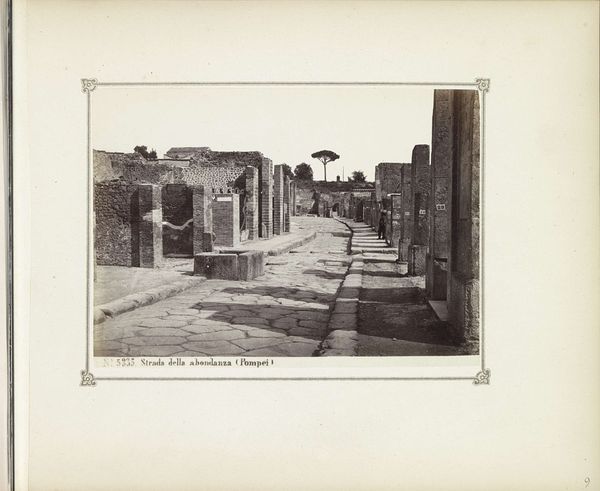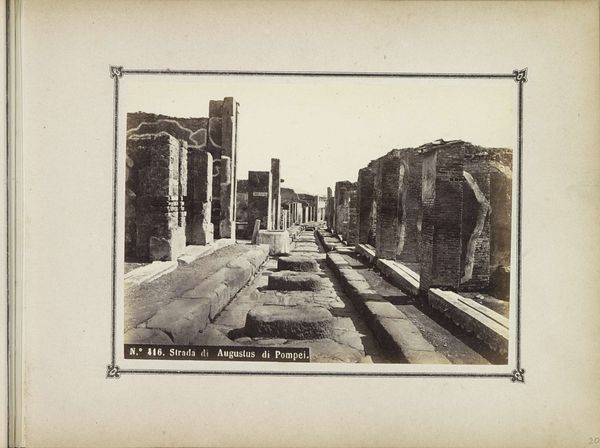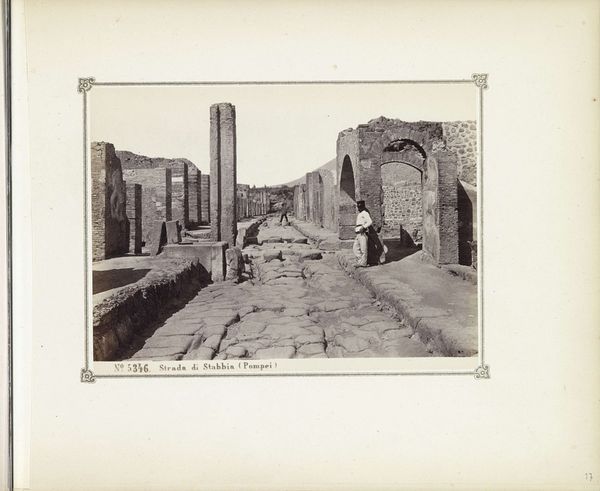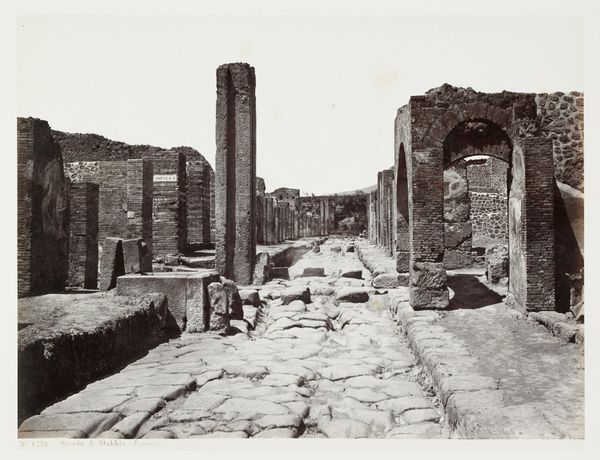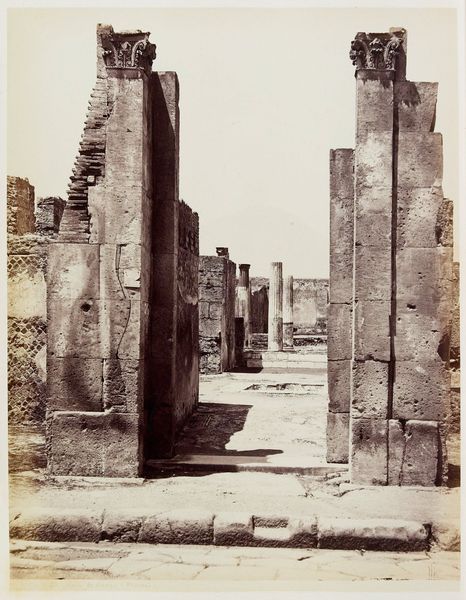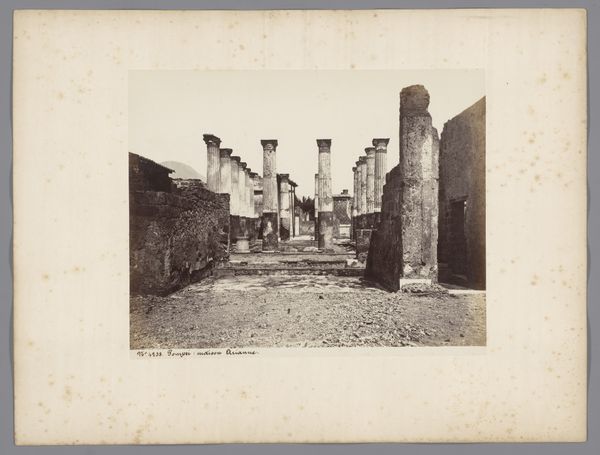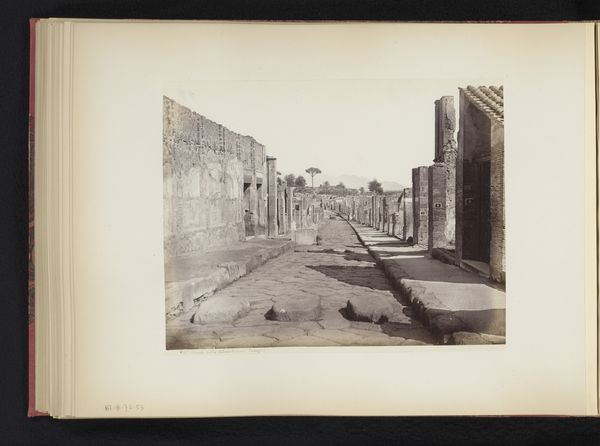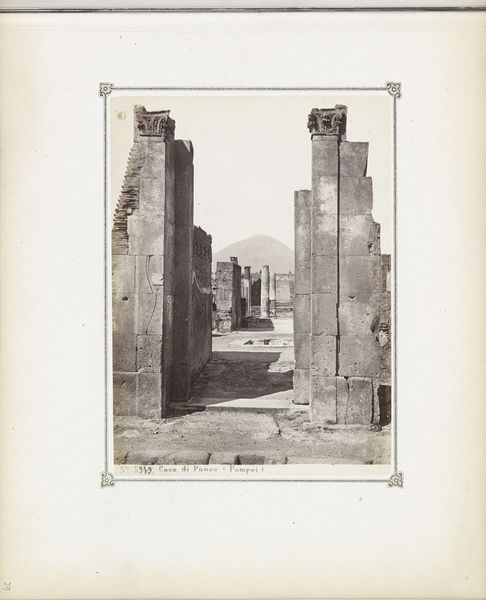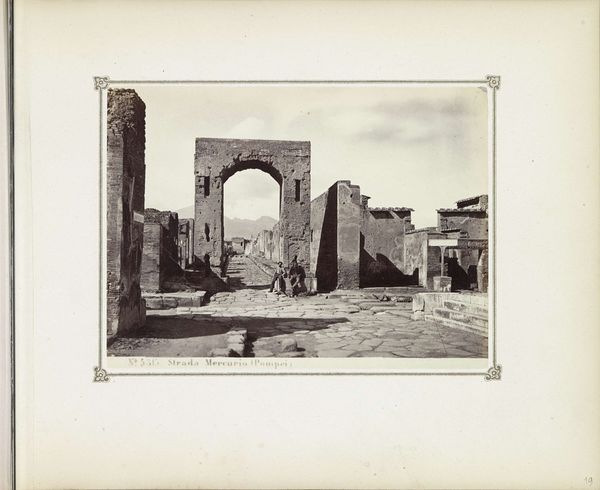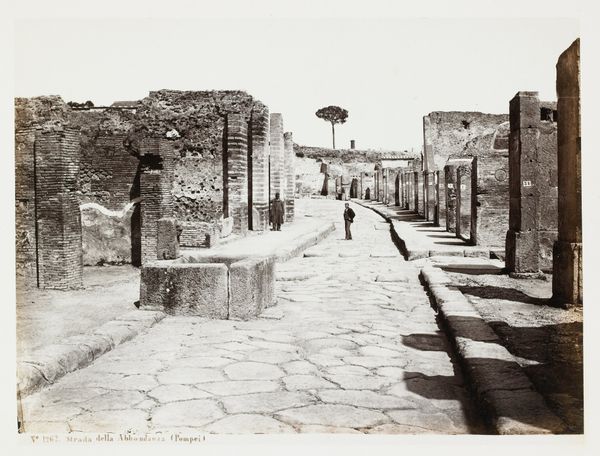
photography, gelatin-silver-print
#
landscape
#
photography
#
ancient-mediterranean
#
orientalism
#
gelatin-silver-print
#
cityscape
#
realism
Dimensions: height 196 mm, width 250 mm, height 241 mm, width 328 mm
Copyright: Rijks Museum: Open Domain
Editor: So, here we have "Strada della Fortuna in Pompeii," a gelatin silver print by Fratelli Alinari, created sometime between 1880 and 1895. The ruinous architecture captured in sepia tones is quite striking, making the street seem very still. What stands out to you about this image? Curator: This photograph captures more than just the ruins; it frames the rise of archaeology as a cultural phenomenon. Pompeii was no longer just a lost city but a stage for the Western gaze, particularly during the era of the Grand Tour. Consider how Alinari's photographs helped shape a public fascination and informed visual expectations for Pompeii. Editor: That’s a good point. These ruins have become so iconic. How do you think the composition influences that interpretation? Curator: The composition places the viewer directly on the street, doesn't it? But observe how these figures give scale to the image while also implying the continuation of that legacy through to the late 19th century, raising the question of authenticity in representation of cultural artifacts. Editor: It’s like the photograph itself becomes another layer in the historical narrative, a mediation between the past and the present. It also reminds me of Orientalist paintings, the romantic, sometimes inaccurate depiction of cultures. Curator: Exactly. These photographs circulated widely, reinforcing particular notions about classical antiquity. Did the image celebrate accurate, educational records of the city, or serve colonial or commercial interests of tourism and publishing industries? The relationship isn't always so clear. Editor: It's interesting to think about the politics of how these images were consumed. This wasn't simply a documentation, but an active construction of a historical narrative. Curator: Precisely, and the fact it’s a photograph adds another layer of assumed objectivity. It’s taught me to question what purpose an image like this served and continues to serve today.
Comments
No comments
Be the first to comment and join the conversation on the ultimate creative platform.
